Other Track Agendas3D-Printing in the Life Sciences, Biofabrication & Synthetic Biology | Tissue Engineering |

Thursday, 17 March 201608:00 | Conference Registration, Materials Pick-Up and Continental Breakfast in the Exhibit Hall | |
Session Title: Opening Plenary Session |
| | |
Plenary Session Chairman: Gabor Forgacs, Ph.D. |
| | 09:00 | 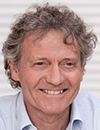 | Keynote Presentation Bioprinting: Challenges to Commercialization of Academic Research -- The Story of Organovo
Gabor Forgacs, Professor, University of Missouri-Columbia; Scientific Founder, Organovo; CSO, Modern Meadow, United States of America
This talk will present the story behind the first commercial bioprinting
company, Organovo. Each attempt to commercialize academic research has
its own challenges. In the case of bioprinting, a paradigm shifting
innovation at the time, the pitfalls and hurdles were above the average.
The talk will briefly overview the science underlying Organovo’s
technology, the process to the establishment of the company, its
evolving business model, the beginning of the commercial operation and
the path to the Initial Public Offering (IPO). We will also briefly
overview the present status of the commercial bioprinting space. It is
hoped that the lessons from this story will provide useful input to
others in the field. |
| 09:30 | 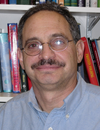 | Keynote Presentation Silk-based Inks and Medical Devices via 3D Printing
David L. Kaplan, Stern Family Endowed Professor of Engineering, Professor & Chair -- Dept of Biomedical Engineering, Tufts University, United States of America
Silk proteins provide unique high molecular weight, amphiphilic, protein
polymers useful in 3D printing. Importantly all aqueous printing at
ambient conditions, without the need for chemical or photoactivated
crosslinkers, offers simple, mechanically robust and biocompatible
outcomes using the silk system. |
| 10:00 | 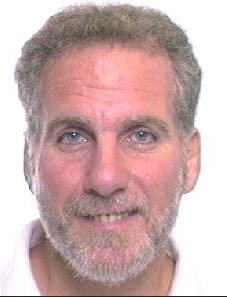 | Keynote Presentation Organ Engineering and Storage
Martin Yarmush, Founding Director of the Center for Engineering in Medicine, Massachusetts General Hospital and Harvard Medical School, United States of America
|
| 10:30 | Coffee Break and Networking | 11:15 |  | Keynote Presentation Microfluidics-based 3D Tissue Fabrication
Shoji Takeuchi, Professor, Center For International Research on Integrative Biomedical Systems (CIBiS), Institute of Industrial Science, The University of Tokyo, Japan
3D tissue construct is important not only in regenerative medicine but also drug testing without animal experiments. Here, I will discuss several MEMS/Microfluidics-based approaches for the rapid construction of 3D tissue. We demonstrated a bottom-up tissue construction method using different types of cellular modules that serve as building blocks for thick and dense 3D tissues (eg., cell beads and cell fibers). |
| 11:45 | 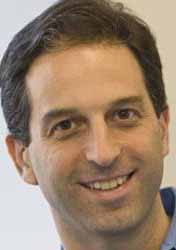 | Keynote Presentation Mammalian Synthetic Biology: From Parts to Modules to Therapeutic Systems
Ron Weiss, Director, MIT Synthetic Biology Center; Professor, Massachusetts Institute of Technology (MIT), United States of America
Synthetic biology is revolutionizing how we conceptualize and approach
the engineering of biological systems. Recent advances in the field are
allowing us to expand beyond the construction and analysis of small gene
networks towards the implementation of complex multicellular systems
with a variety of applications. In this talk I will describe our
integrated computational / experimental approach to engineering complex
behavior in a variety of cells, with a focus on mammalian cells. In our
research, we appropriate design principles from electrical engineering
and other established fields. |
| 12:30 | Networking Lunch, Discussions with Exhibitors and View Posters | |
Session Title: Emerging Trends in the Bioprinting Space |
| | 14:00 | Standard Tools for Biology
Danny Cabrera, CEO, Biobots Inc, United States of America
Biology is the most sophisticated manufacturing technology that we know of. If we could control life, we could cure disease, eliminate the organ waiting list, revert climate change and push life to other planets. However, our ability to engineer living systems has been restricted by the lack of standard tools that exist for manipulating biology. BioBots is addressing this need by creating a standard suite of digital biofabrication tools. Together with our partners and clients, we are blending biology with robotics and software to reimagine the modern laboratory and push the human race forward. | 14:30 | 3D Bioprinting with Stem Cells for Soft Tissue Engineering
Paul Gatenholm, Professor, Director of 3D Bioprinting Center, Chalmers University of Technology, Sweden; CEO, CELLHEAL AS, Norway, Sweden
Erik Gatenholm, Director Of Operations, Cellink By Aptab, Sweden
The introduction of 3D bioprinting is expected to revolutionize the field of tissue engineering and regenerative medicine, which enables the reconstruction of living tissue and organs using the patient’s own cells. We have developed novel bioinks based on polysaccharide nanofibrils with unique combination of printing fidelity good mechanical properties and biocompatibility. Nanofibril dispersion have extremely shear thinning properties and high zero shear viscosity. 3D bioprinting fidelity which is achieved with these bioinks made it possible to print complex cartilage tissue shapes such as ear, nose and meniscus. | 15:00 | Print-to-Screen: A High-Throughput Multiplexed Microfluidic Analytical Platform
Tingrui Pan, Professor, Department of Biomedical Engineering, University of California-Davis, United States of America
| 15:30 | Coffee Break and Networking in the Exhibit Hall | 16:00 | Bioinks Supporting Angiogenic Potential in Organ Printing
William G Whitford, Life Science Strategic Solutions Leader, DPS Group, United States of America
Michael Golway, President & CEO, Advanced Solutions, Inc., United States of America
Larger tissues require cells capable of angiogenesis. Bioinks and proto-organ progression media must support these cell types requiring their own optimal growth/differentiation factors and metabolites. | 16:30 | The Total Quality Approach for Cytocentric Biofabrication
Alicia Henn, Chief Scientific Officer, BioSpherix, Ltd., United States of America
The ideal environment for a biofabrication apparatus is one that provides a full-time physical barrier between the apparatus and room air. The use of a barrier isolator to surround a bioprinter not only lowers biosafety risks for personnel, but also allows containment of a continuously sterile, controlled atmosphere for materials, cells, and the completed organ. We will actively discuss the many ways that a total quality approach to the biofabrication environment can bring reproducible control to production processes from materials preparation through organ manufacture to batch records. | 17:00 | 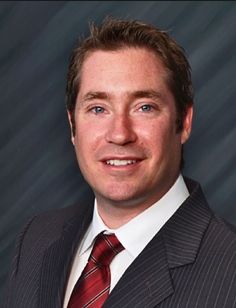 | Keynote Presentation Bioprinting Industry Challenges and Solutions
Keith Murphy, CEO, Organovo, United States of America
The field of bioprinting has the potential to impact the medical and life sciences fields in many ways in the coming decades. Creating wins for patients that also benefit corporate stakeholders and employees takes a focus on many aspects of commercialization beyond winning technology. Bioprinting scientists and executives need to understand and master key aspects of value creation, intellectual property, and negotiation with pharma and other technology end users to maximize the impact and overall success of the field. |
| 18:00 | Networking Cocktail Reception for All Delegates, Speakers, Sponsors and Exhibitors on the 15th Floor with a View of Boston and the Charles River | 19:30 | Close of Day 1 of the Conference. Microfluidics in Bioprinting Dinner Training Course Begins. |
Friday, 18 March 201608:00 | Morning Coffee, Breakfast Pastries, and Networking | |
Session Title: Technology Platforms and Approaches for 3D-Printing in the Life Sciences |
| | 08:30 | Hybrid Crosslink Hydrogels with Controlled Cell Adhesion for 3D-Bioprinted Wound and Deep Burn Implantable Constructs
Josef Jancár, Director Institute of Materials Chemistry, Faculty of Chemistry and Program Coordinator Advanced Materials, Central European Institute of Technology, Brno University of Technology, Czech Republic, Czech Republic
Amphiphilic BCPs have attracted a great deal of attention in terms of their ability to form micelles, nanocapsules, nanospheres, core-shell nanoparticles in the size of 10–100 nm, characterized by a core-shell architecture in which the core serves as a reservoir for the incorporation of poorly water soluble drugs; while, the hydrophilic shell provides a protective interface between the core and the external medium. Active substance release can be manipulated by choosing biodegradable polymers with different surface or bulk erosion rates, and external conditions such as pH and temperature changes may function as a switch to trigger drug release. Hierarchical structure can be formed simulating layered skin structure employing various techniques including 3D bioprinting. The modification with itaconic anhydride (ITA) that brings carboxylic functional groups and double bonds to the end of light, temperature and pH sensitive gel forming macromonomers has attracted attention since they can be cross-linked either covalent bonding via rapid photopolymerization and/or physically by hydrogen bond or ionic interactions of carboxylic groups with Ca2+ in order to produce new functionalized 3D-hydrogel network. | 09:00 | 4D Bioprinting: Programming Self-Organization to Engineer Biological Tissues
Fabien Guillemot, Chief Executive Officer, Poietis, France
Bioprinting has been defined as “the use of computer-aided transfer processes for patterning and assembling living and non-living materials with a prescribed 2D or 3D organization in order to produce bio-engineered structures serving in regenerative medicine, pharmacokinetic and basic cell biology studies”. From a technological point of view, the Laser-Assisted Bioprinting (LAB) technology has emerged as an alternative method to inkjet and bioextrusion methods, thereby overcoming some of their limitations (namely clogging of print heads or capillaries) to pattern living cells and biomaterials with a micron-scale resolution and high cell viability. By harnessing this high cell printing resolution, we observe that tissue self-organization depends on the cell patterns initially printed by LAB, as well as cell types. We introduce from experiments performed in vitro and in vivo the 4D Bioprinting paradigm. | 09:30 | 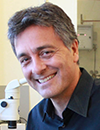 | Keynote Presentation 3D-Printed Microfluidics for Personalized Medicine
Albert Folch, Professor of Bioengineering, University of Washington, United States of America
Biologists and clinicians typically do not have access to microfluidic technology because they do not have the engineering expertise or equipment required to fabricate and/or operate microfluidic devices. Furthermore, the present commercialization path for microfluidic devices is usually restricted to high-volume applications in order to recover the large investment needed to develop the plastic molding processes. We are developing microfluidic devices through stereolithography, a form of 3D printing, in order to make microfluidic technology readily available via the web to biomedical scientists. Our lab presently focuses on developing 3D-printable microdevices that facilitate the advancement of basic neuroscience and translational cancer applications. The lab's long-term mission is to make microfluidic devices as easy to use as smartphones and make them easily available to clinicians in order to enable personalized cancer diagnostics and therapies. |
| 10:00 | 3D Bioprinting of Cells-Loaded ECM Biomimetic Hydrogels for Tissue Formation
Wojciech Swieszkowski, Professor in Materials Design Division, Faculty of Materials Science and Engineering, Warsaw University of Technology, Poland
The aim of the study is to demonstrate how to print 3D biomimetic hydrogel scaffolds for tissue engineering with high cell density, high cell viability and high printing resolution using a novel 3D bioprinting approach. We used an innovative 3D deposition system based on a coaxial-needles extruder developed in-house. The bioinks were composed of modified biopolymers like gelatin, alginate, hyaluronic acid or chitosan. The biomimetic hydrogel were loaded with different types of cell including bone marrow-derived human mesenchymal stem cells or chondrocytes. Our findings show that the presented 3D printing method is highly robust and accurate and allows for formation of 3D biostructures which after some period develop into neo-tissues. | 10:30 | Coffee Break and Networking in the Exhibit Hall | 11:00 | 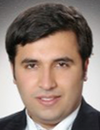 | Keynote Presentation From Perfusable Tissue Printing to in-situ Bioprinting
Ibrahim Ozbolat, Hartz Family Associate Professor of Engineering Science and Mechanics, The Huck Institutes of the Life Sciences, Penn State University, United States of America
|
| 11:30 |  | Keynote Presentation Bioprinting of Functional Mouse Thyroid Gland Organ Constructs
Elena Bulanova, Head of Cell Technologies, 3D Bioprinting Solutions Russia, Russian Federation
Mouse thyroid glands have been bioprinted using rounded embryonic mouse thyroid gland explants and rounded mouse allantodies explants and collagen hydrogel. The functional studies demonstrated that bioprinted organ constructs produce thyroid hormone thyroxine in the volume sufficient enough to compensate thyroid gland function loss in the radioactive animal model of thyroid gland hypo-function.
|
| 12:00 | The Intellectual Property Landscape of 3D Printing in the Life Sciences
Robert Esmond, Director, Sterne, Kessler, Goldstein & Fox P.L.L.C, United States of America
Jennifer Bush, General Counsel, Organovo, Inc., United States of America
This presentation will focus on the patent landscape covering 3D printing in the life sciences. In addition, the presentation will discuss limitations on recent trends regarding patent eligibility under 35 U.S.C. § 101, as well as the application of 35 USC § 271(e) research exemption to patent infringement in the context of bioprinted research tools. | 12:30 |  | Keynote Presentation Building Blood Vessels Using Tissue Engineering and 3D-Bioprinting
Stuart Williams, Director, University of Louisville, United States of America
The cardiovascular system is comprised of blood vessels with varying dimensions and functions. Successful creation of tissue constructs and organs will require the establishment of a functional vascular system that responds to the metabolic needs of the implant. We continue to develop operating room compatible systems for the isolation of autologous cells for use in reconstituting blood vessels of various calibers. We have utilized 3D-Bioprinting to create pre-vascularized tissue constructs with a goal of assembling complete organs for implantation. |
| 13:00 | Networking Lunch, Discussions with Exhibitors and View Posters | |
Session Title: The Business Case for 3D-Printing in the Life Sciences |
| | 14:00 |  | Keynote Presentation 3D Bioprinting with Stem Cells for Soft Tissue Engineering
Paul Gatenholm, Professor, Director of 3D Bioprinting Center, Chalmers University of Technology, Sweden; CEO, CELLHEAL AS, Norway, Sweden
The introduction of 3D-bioprinting is expected to revolutionize the field of tissue engineering and regenerative medicine, which enables the reconstruction of living tissue and organs using the patient’s own cells. We have developed novel bioinks based on polysaccharide nanofibrils with unique combination of printing fidelity good mechanical properties and biocompatibility. Nanofibril dispersion have extremely shear thinning properties and high zero shear viscosity. 3D bioprinting fidelity which is achieved with these bioinks made it possible to print complex cartilage tissue shapes such as ear, nose and meniscus. |
| 14:30 |  | Keynote Presentation Visions of a Bioprinted Future
John Hornick, Partner, Finnegan, Henderson, Farabow, Garrett & Dunner, L.L.P., United States of America
Internationally recognized 3D printing thought leader, John Hornick,
shares his vision of the dark side and the bright side of bioprinting,
whose current trajectory promises man-made tissue and organs, possibly
sooner than you think. In a thought-provoking, slightly scary, and
ultimately inspiring presentation, John explores the myriad issues of
this disruptive technology, including intellectual property, bioethics,
counterfeiting, and customization. |
| 15:00 | Breaking Down the Bioprinting Value Chain to Find Successful Business Models
Anthony Vicari, Analyst, Advanced Materials, Lux Research, Inc., United States of America
| 15:30 | Coffee and Panel Discussion: Challenges for the Implementation of Tissue Engineering and Bioprinting in Clinical Practice -- Issues and Perspectives | 16:30 | Close of Conference |
|

 Add to Calendar ▼2016-03-17 00:00:002016-03-18 00:00:00Europe/London3D-Printing in the Life Sciences, Biofabrication and Synthetic BiologySELECTBIOenquiries@selectbiosciences.com
Add to Calendar ▼2016-03-17 00:00:002016-03-18 00:00:00Europe/London3D-Printing in the Life Sciences, Biofabrication and Synthetic BiologySELECTBIOenquiries@selectbiosciences.com